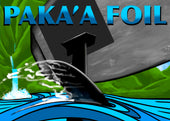How much wind is needed for wing foiling?
You may have asked yourself, 'Is X mph of wind enough to go wing foiling?' Like all wind sports, the thrill factor increases with an increase in wind speed. But there are limits for most people. One of the most common questions beginners ask is, "How much wind do I need for wing foiling?"
Wind Speed and Direction: The amount of wind required for wing foiling depends on several factors, including wind speed and direction. Typically, a minimum wind speed of around 12-18 mph is required for wing foiling. However, the ideal wind speed may vary depending on the rider's skill level, weight, and equipment. We have found that beginners do the best with about 15mph of steady onshore wind.
To simplify, consider three different wind zones: Light wind are under 10mph, average winds are 12-18mph, and heavy winds are 18+mph (consistently seen in Maui and Hood River). Each condition typical requires a specialized gear setup to optimize those conditions.
In addition to wind speed, wind direction is also important to consider. Wing foiling is best when there is a consistent and steady wind. Crosswinds or gusty winds can make it challenging to maintain balance and control while riding. On shore winds are considered the safest because they blow riders back onto the beach. Side shore winds generally require more advanced skills to be able to stay upwind, otherwise a LONG paddle or walk may be required to get back to your starting point.
Factors Affecting Wind Speed: Several factors can affect wind speed, including the time of day, location, and weather conditions. In general, wind speeds tend to be stronger during the late morning and early afternoon when the sun has had time to heat up the land, creating thermal winds. Coastal locations also tend to have stronger and more consistent winds due to the proximity to the ocean.
Choosing the Right Equipment: Choosing the right equipment is also important for wing foiling, including selecting the appropriate wing size and board for the wind conditions. As a general rule, larger wings and boards are better for lighter wind conditions, while smaller wings and boards are better for stronger winds. Interestingly, we have found that foil size is more dictated by wave size than wind speed. For winds under 10mph, it's extremely helpful to have a longer downwind board, a specially designed light wind wing, and a bigger foil with a low stall speed.
It's important to note that the wind conditions required for wing foiling may vary depending on individual factors such as skill level, weight, and equipment. Beginners may find it easier to learn in lighter wind conditions, while more experienced riders may prefer stronger winds for increased speed and maneuverability.
In conclusion, a minimum wind speed of around 12-18 mph is typically required for wing foiling. Wind direction, location, and weather conditions can also affect wind speed and play a role in determining the appropriate wind conditions for wing foiling. Choosing the right equipment, including wing size and board, is also important for optimal performance and enjoyment. If you're new to wing foiling, it's always a good idea to consult with a wing foiling instructor or equipment dealer to help you select the appropriate gear and get started on the right foot.




